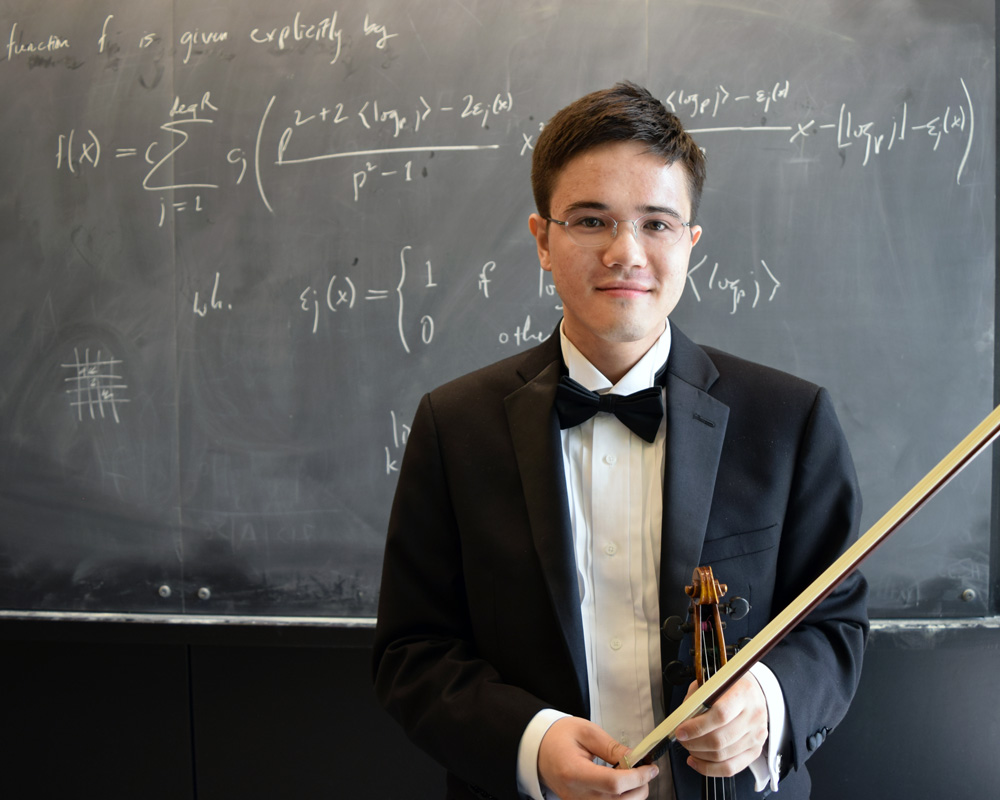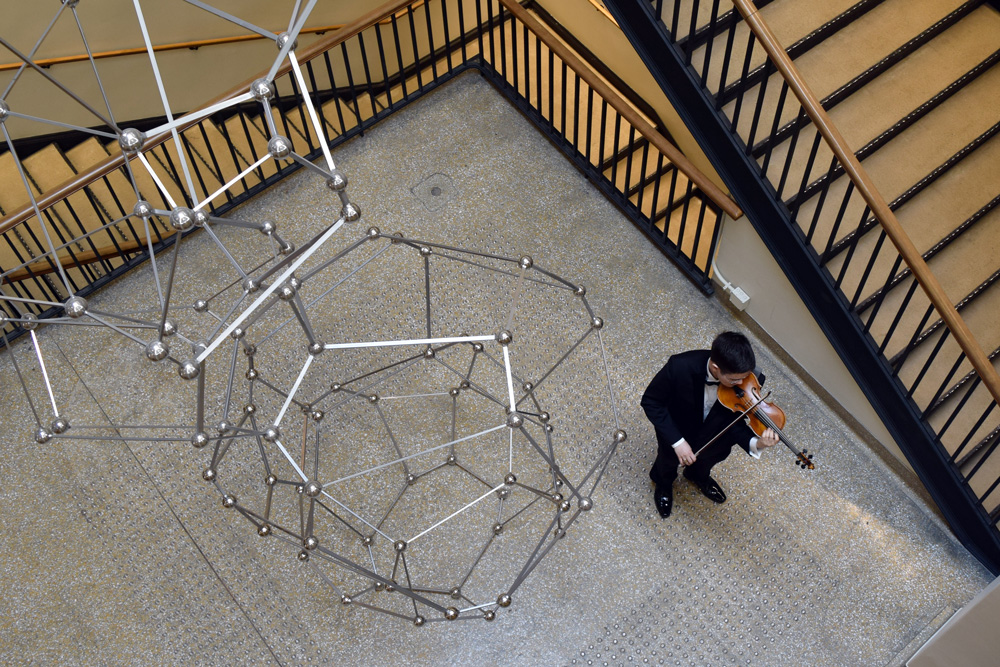The Louis Sudler Prize is presented annually to a graduating senior who has demonstrated excellence or the highest standards of proficiency in music, theater, painting, sculpture, design, architecture or film. An endowment fund provides a $2,500 award to the honoree. The prize was established in 1982 by Louis Sudler, a performer in the arts and an arts patron from Chicago and is stewarded by the Council for the Arts at MIT.
One. Two.
One. Two. Three. FOUR!
Music and math have gone together since the human heartbeat was transferred to a drum and both continue to inspire and engage in myriad ways.
For 2018 theoretical mathematics and music composition major Bertrand Stone, the combination has been part of him for as long as he can remember.
“I think it was always clear that I would go into the sciences in some capacity,” asserts Stone, who was a participant in the 2013 Research Science Institute at MIT, “even if it wasn’t always clear in which field.”
Originally interested in aerospace, Stone became interested in theoretical math through special functions while in high school.
“This led to an interest in mathematical analysis,” he explains, “and from there I’ve become interested in fields related to measure theory: probability, stochastic processes, and functional analysis/PDE.”
When asked about his musical side, Stone (who recalls long periods of listening to Mozart’s Don Giovanni every day) responds with a favorite story that pays tribute to one of his many mentors.
Pursuing Music Theory and Composition
“Before college, my interest in music was largely directed towards theory,” the 16-year violin student maintains, mentioning such rare compositions as a cadenza and a three-minute quartet movement. “More typically, I would analyze piano reductions of Wagner.”
After enrolling in Keeril Makan’s Harmony and Counterpoint II class, however, Stone’s compositional pen came to life.
“I wrote a theme, three classical variations, and five additional…variations,” Stone recounts. “The result was sufficiently entertaining, and so began my serious interest in composition.”
An Astonishing and Remarkable Ear
In his nomination (which Stone admits was a “surprise”), Professor Makan assembled accolades from many of Stone’s teachers and colleagues, including Adam Boyles, conductor of the MIT Symphony Orchestra (MITSO). In the letter, Makan cites Stone’s “astonishing” ears (in particular, his “remarkable ear for the Romantic tradition”) and calls him “one of the brightest students I have taught in quite a few years,” noting that Stone “already knew the assigned repertoire” when the two began learning together.
“Awarding him the Sudler,” Makan suggests, mentioning the award named for Chicago-based performer and patron Louis Sudler that is presented annually to a graduating senior who has demonstrated excellence or the highest standards of proficiency in music and the arts, “would be one of the most natural ways of recognizing his tremendous talents and commitment to music at MIT.”

The Staple Bertrand Stone
Since studying with Makan, Stone has become a staple on the arts scene at MIT and beyond. His Flute Concerto was premiered in last October by MITSO (with whom Stone has played since 2014). His String Quartet in A minor was premiered by the Aeolus Quartet in May of 2017.
His composition In der Frühe was played and recorded by the Boston Philharmonic Youth Orchestra as part of their 2018 Young Composers Initiative.
For his efforts, Stone has received many accolades, including the 2017 Gregory Tucker Memorial Prize, which is awarded by the MIT Music and Theater Arts Section in recognition of exceptional ability in composition, performance, music-historical studies or music technology.
Dual Disciplines
“When I explain that I’m majoring in mathematics and music,” Stone surmises, “I sometimes also observe that I’m living [a] cliché.”
Keenly aware of the synergies between the fields, Stone is very comfortable with his dual disciplines.
“In both,” he observes, “the interesting ideas are those that lead to other ideas—in math, one might notice an interesting connection between two apparently unrelated objects, and in music, one might find a motivic idea of particular harmonic interest, which could be used to build an entire movement.”
Even so, Stone asserts, he is not inclined to “compose according to a formal mathematical procedure” even though his next stop is a PhD in pure mathematics at UCLA, “because I don’t think it would be consistent with the expressive ends of music.”

